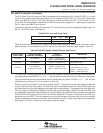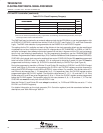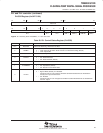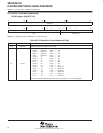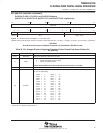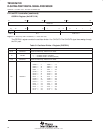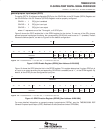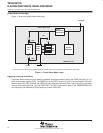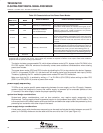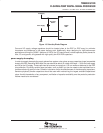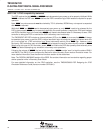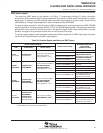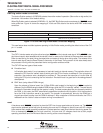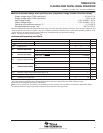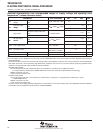
TMS320C6712D
FLOATINGĆPOINT DIGITAL SIGNAL PROCESSOR
SPRS293A − OCTOBER 2005 − REVISED NOVEMBER 2005
55
POST OFFICE BOX 1443 • HOUSTON, TEXAS 77251−1443
31 16
15 14 13 12 11 10 9 8
Reserved
Enable or
Non-Enabled
Interrupt Wake
Enabled
Interrupt Wake
PD3 PD2 PD1
R/W-0 R/W-0 R/W-0 R/W-0 R/W-0 R/W-0
7 0
Legend: R/W−x = Read/write reset value
NOTE: The shadowed bits are not part of the power-down logic discussion and therefore are not covered here. For information on these other
bit fields in the CSR register, see the TMS320C6000 CPU and Instruction Set Reference Guide (literature number SPRU189).
Figure 12. PWRD Field of the CSR Register
A delay of up to nine clock cycles may occur after the instruction that sets the PWRD bits in the CSR before the
PD mode takes effect. As best practice, NOPs should be padded after the PWRD bits are set in the CSR to account
for this delay.
If PD1 mode is terminated by a non-enabled interrupt, the program execution returns to the instruction where PD1
took effect. If PD1 mode is terminated by an enabled interrupt, the interrupt service routine will be executed first,
then the program execution returns to the instruction where PD1 took effect. In the case with an enabled, interrupt,
the GIE bit in the CSR and the NMIE bit in the interrupt enable register (IER) must also be set in order for the
interrupt service routine to execute; otherwise, execution returns to the instruction where PD1 took effect upon
PD1 mode termination by an enabled interrupt.
PD2 and PD3 modes can only be aborted by device reset. Table 32 summarizes all the power-down modes.



